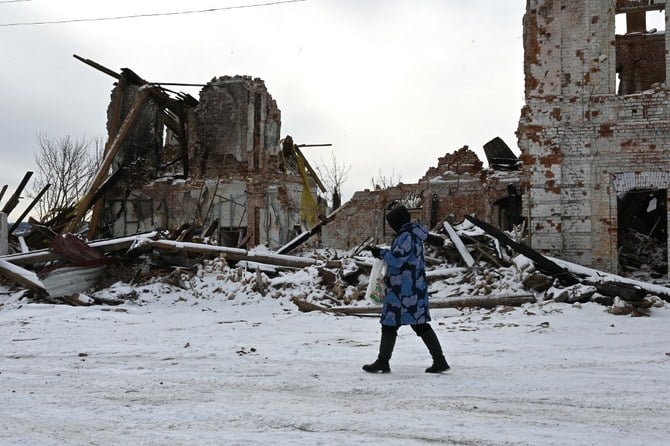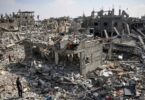Andrew Hammond
One year into the Ukraine conflict, hostilities show no obvious sign of ending any time soon. However, the issue of postwar reconstruction is climbing up the political ladder in the West, including in multilateral institutions like the G7. In part, this is because the international stakes in the nation’s rebuilding are so big that failure could have profound consequences not just for Ukraine, but also for the broader region and the wider West to boot.
This core reconstruction issue was the focal point at this week’s ReBuild Ukraine expo in Poland. It will also be a discussion item on Friday, Saturday and Sunday at the world’s premier military affairs conference, the Munich Security Summit, where G7 foreign ministers will be meeting on Saturday. Moreover, President Volodymyr Zelensky last week held an online investment summit with some 200 large corporations, investors and financial companies. They discussed the creation of a platform to attract private capital to rebuild Ukraine and large investment projects including in green energy, IT and agricultural technologies.
Ukraine estimates Russia has caused at least $1 trillion of damage in the last 12 months, separate from the costs associated with the territory invaded in 2014. In early December, the World Bank also estimated the cost of Ukraine’s postwar reconstruction was upwards of €600 billion ($642 billion). Although the war rages on, European decision-makers are now thinking more intently about the medium to long-term future of Ukraine. At last week’s EU summit, for instance, there was a discussion on investing frozen Russian assets in Ukraine’s reconstruction. About $300 billion of Russian reserves held in international banks have been frozen since the invasion of Ukraine. The EU’s latest proposal would be to invest the frozen assets and use the profits for reconstruction.
This scheme has strong support from key Eastern European states, including Poland, Lithuania, Latvia and Estonia. And EU leaders ultimately agreed to work “toward the use of Russia’s frozen and immobilized assets to support Ukraine’s reconstruction and for the purpose of reparation, in accordance with international law.” Beyond the question of money, however, is the EU’s political strategy toward Ukraine. This is linked to the bloc’s future enlargement. The European integration process began in the 1950s with six founding members and the community has steadily expanded, Brexit aside, ever since, including the accession in 2004 of 10 new member countries from formerly communist Central and Eastern Europe.
The revival of the EU enlargement process in 2022 highlighted how much is changing in Europe as a result of Russia’s invasion. In recent years, the enlargement process for Turkey and the Western Balkan countries has been much more challenging than was the case for the Central and Eastern European countries prior to 2004. With the process stalling for years, the rejuvenation of the enlargement agenda has been driven by Russia’s invasion. While there is much energy behind Ukraine’s bid, in particular, EU enlargement is a lengthy process and French President Emmanuel Macron has warned it could take several decades for Kyiv to become a full member.
While the EU’s enlargement process may appear unrelated to Ukraine’s rebuilding, the two are actually closely linked in the eyes of many stakeholders. This is because the EU accession process is widely expected to occur in parallel with reconstruction. In part, this is because of the acknowledgment of the need for wider political and institutional change in Ukraine following criticism prior to the war, including regarding corruption. Ukraine last year released a National Recovery Plan that laid out the country’s initial road map for not only rebuilding but also transforming itself. The plan covers nearly every aspect of Ukraine’s economy and infrastructure, and it may be at the center of future reconstruction efforts.
The plan’s objectives are threefold: economic, social and environmental resilience; quick solutions for recovery of the economic, social and environmental sectors; and a modernization and growth plan that will ensure expedited sustainable economic growth and the well-being of the people. It is divided into three phases, covering immediate needs through 2023, medium-term needs into 2025, and longer-term needs for a modernization phase from 2026 to 2032. The first stage of this plan is therefore ongoing, including via local authorities cleaning up and restoring key facilities that have been destroyed.
A later stage, which may begin immediately after the end of mass hostilities, will be focused more on recovery, including restoring water supplies and providing housing. It will only be after that stage that there can be a more full-fledged renewal of Ukrainian infrastructure and transport systems, which will be the costliest, longest stage. So, while the war may yet last for a significant period, there is much thinking and preparation already underway about the reconstruction agenda. Ukraine’s immediate-term future is still about survival and, until large-scale fighting ends, much of the massive reconstruction process will remain on ice.







